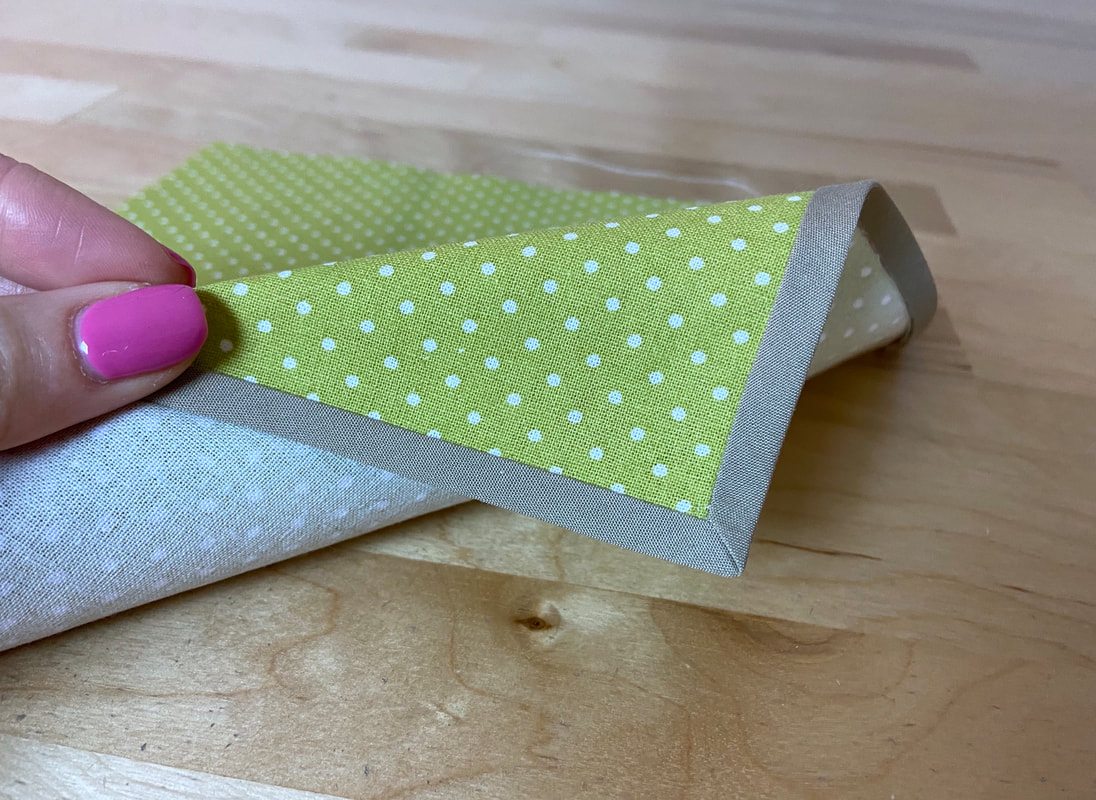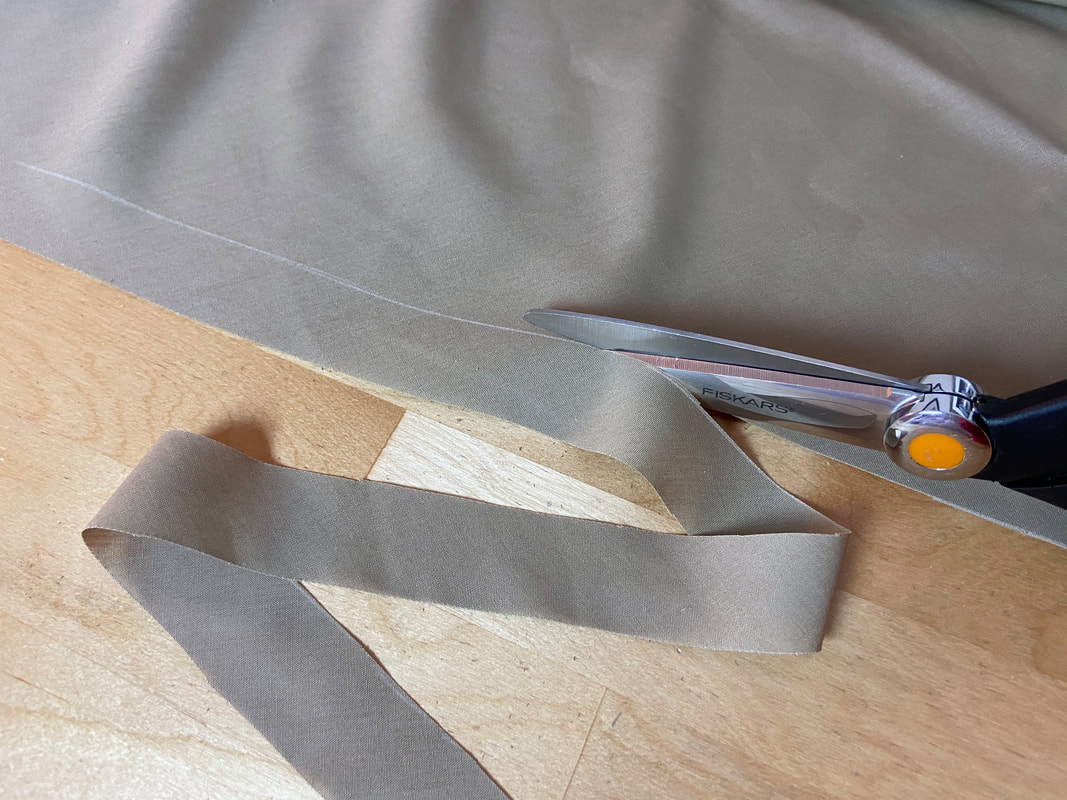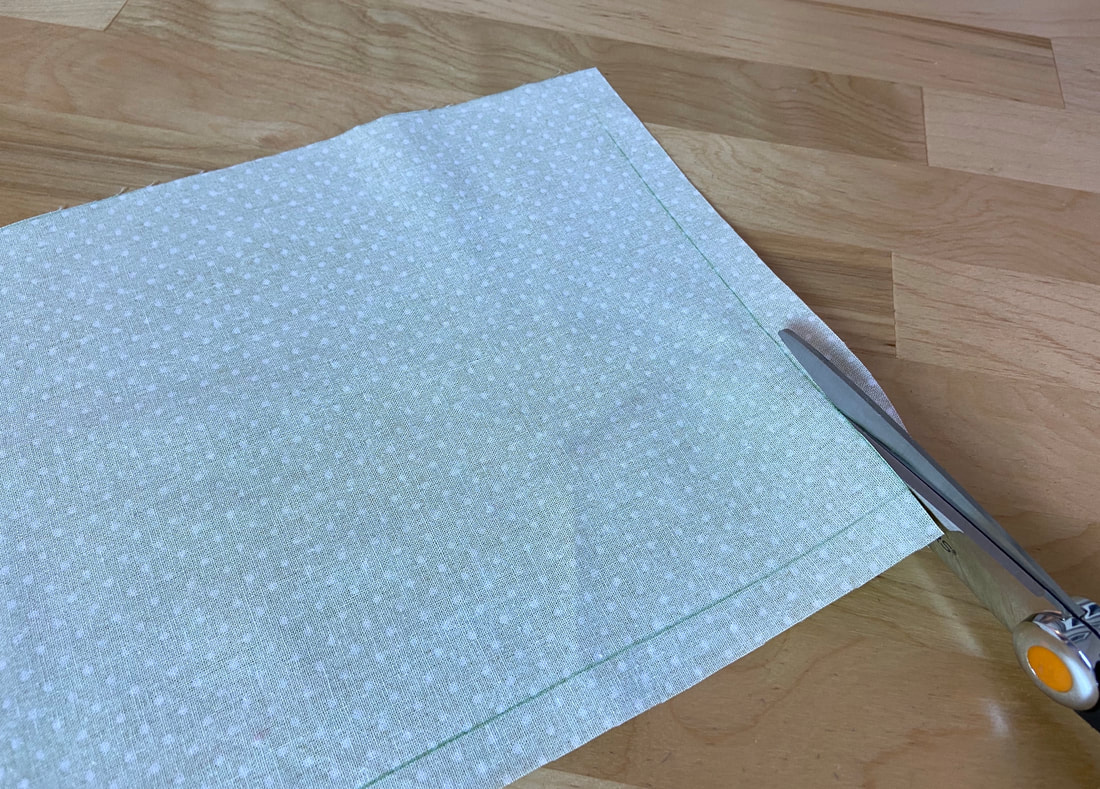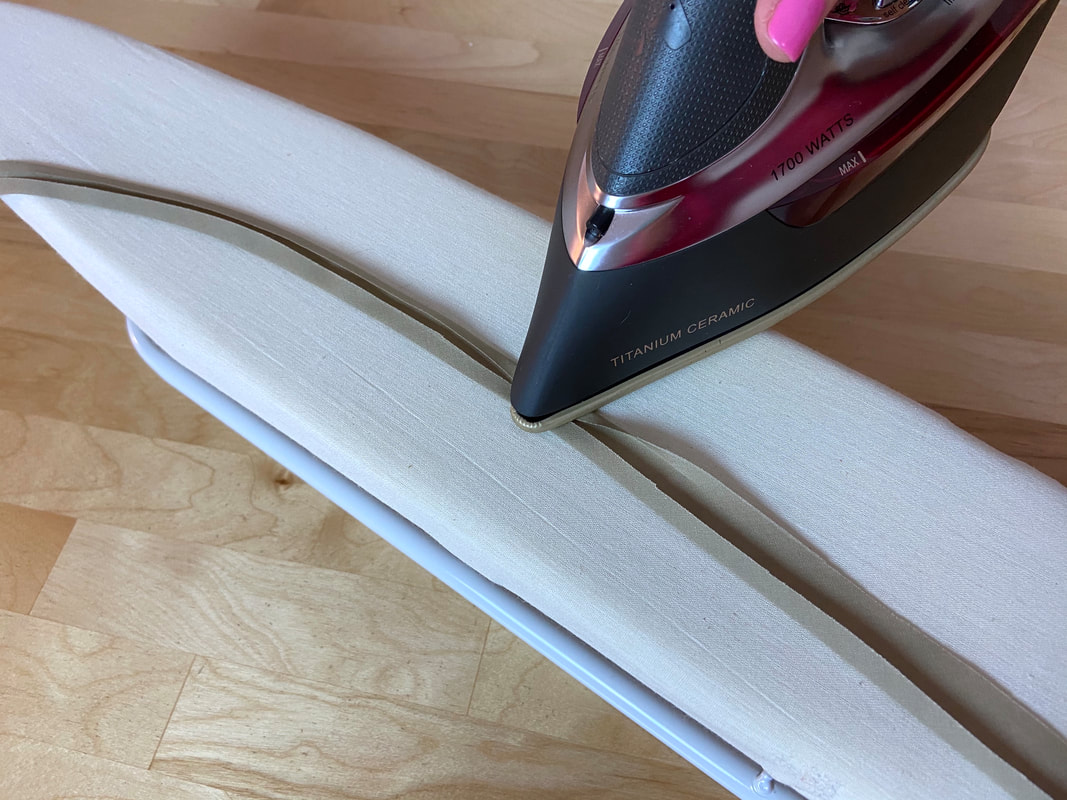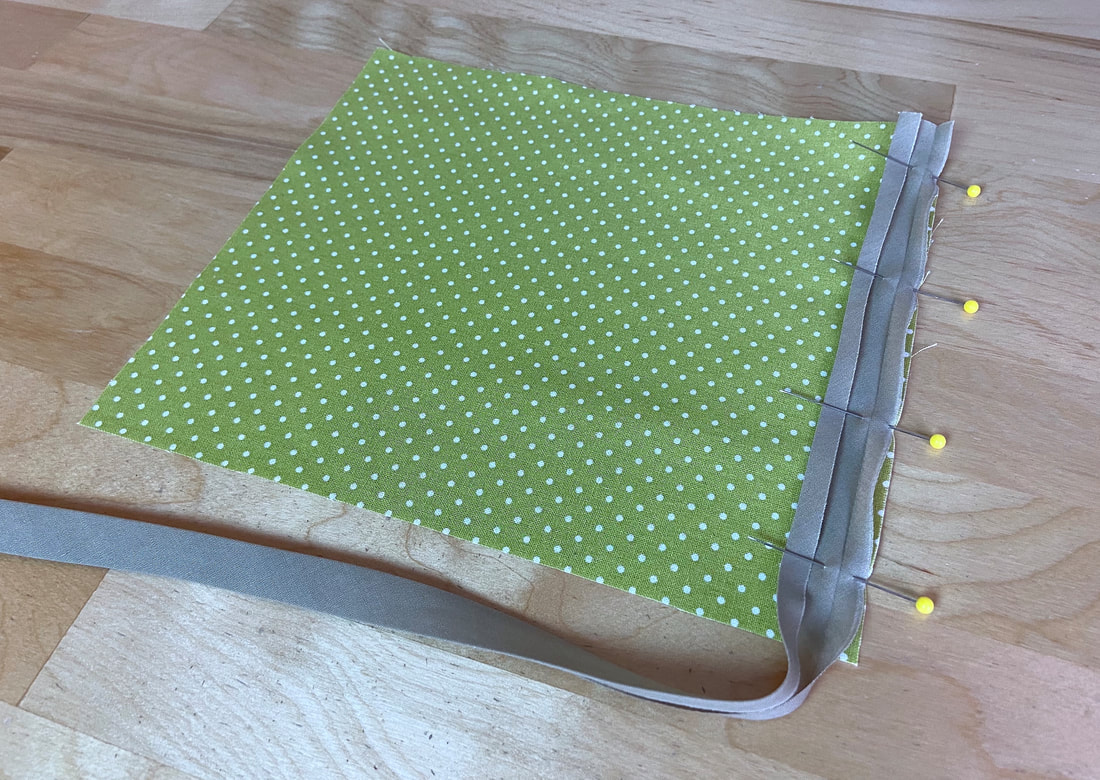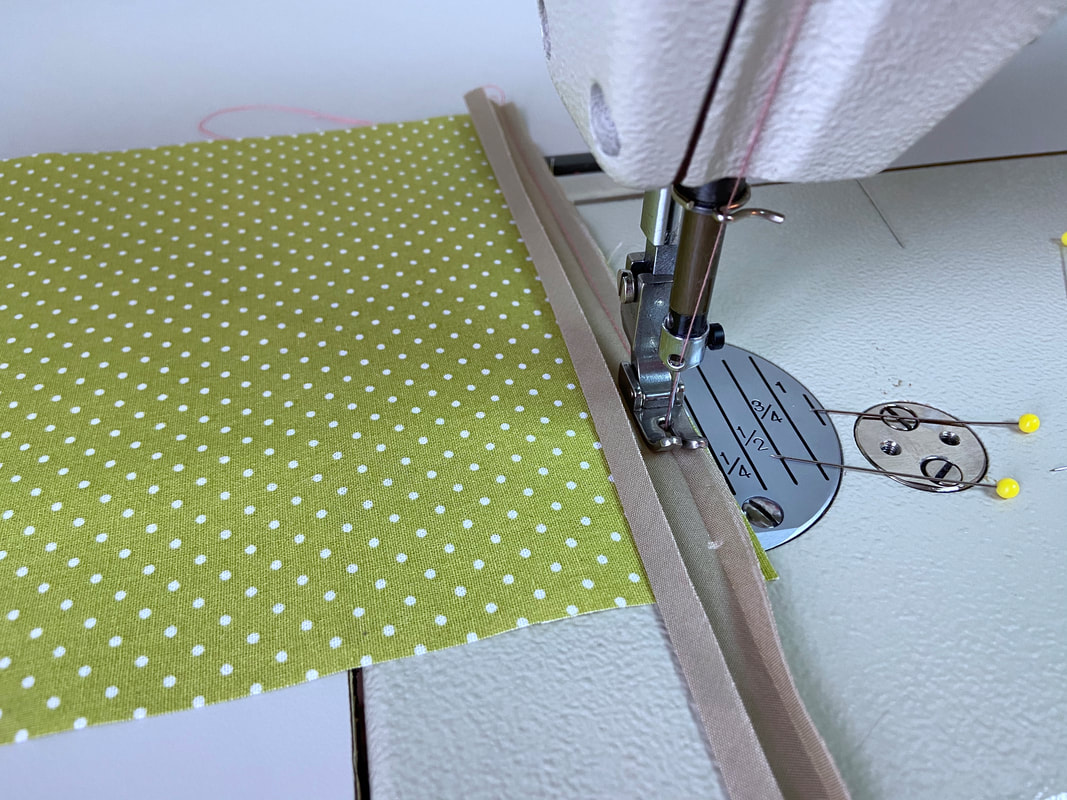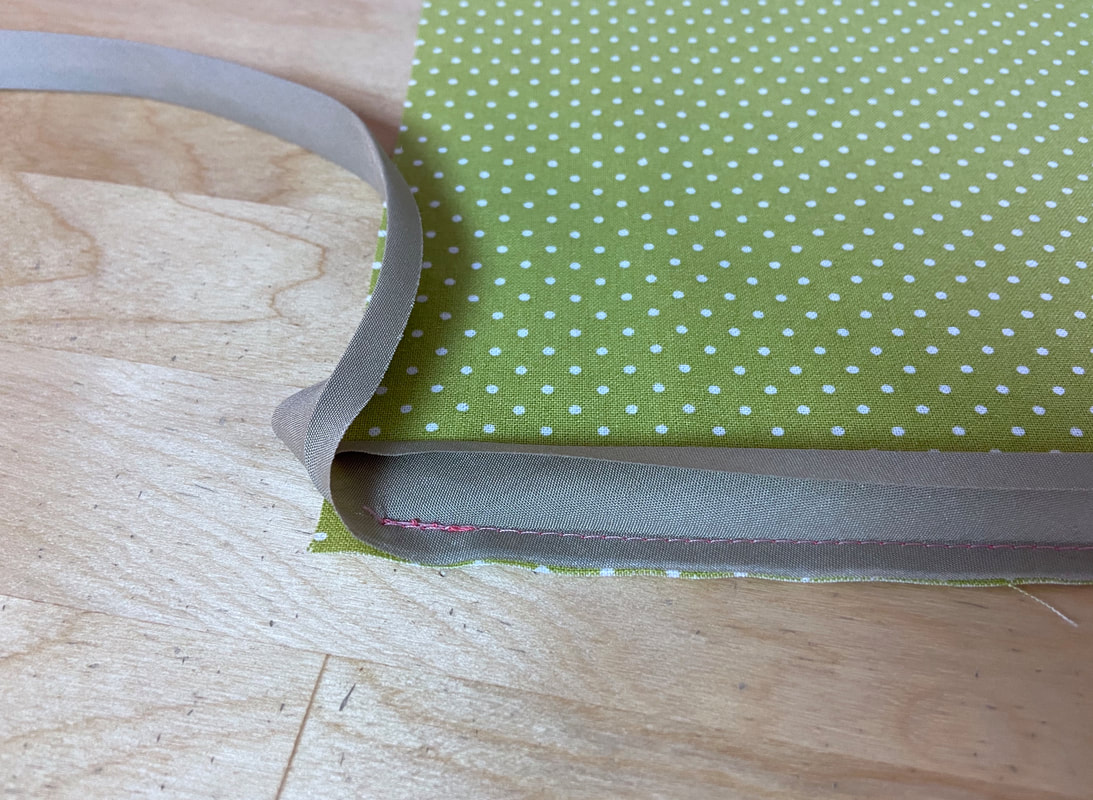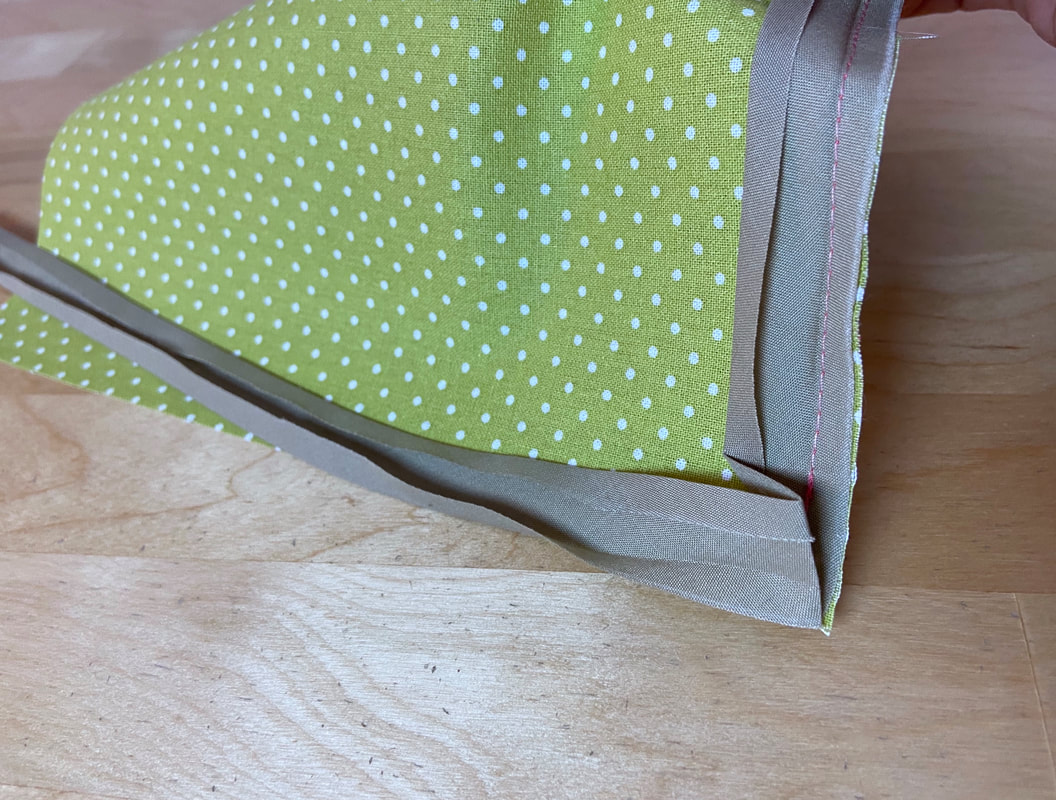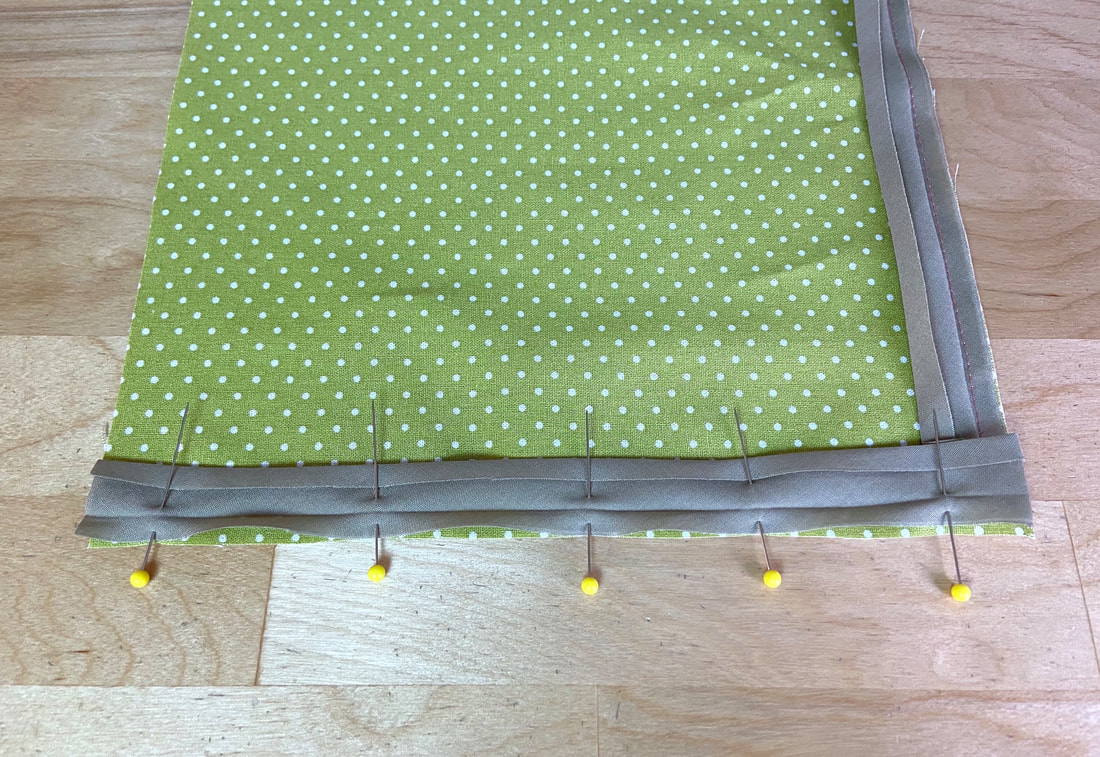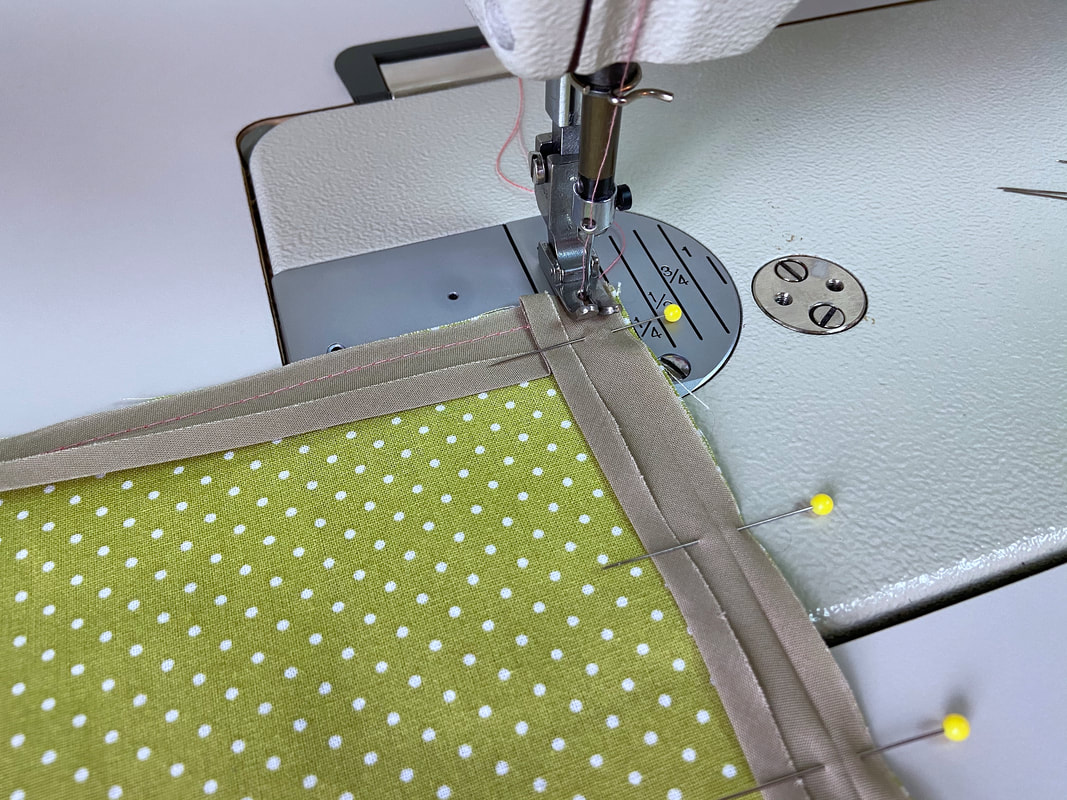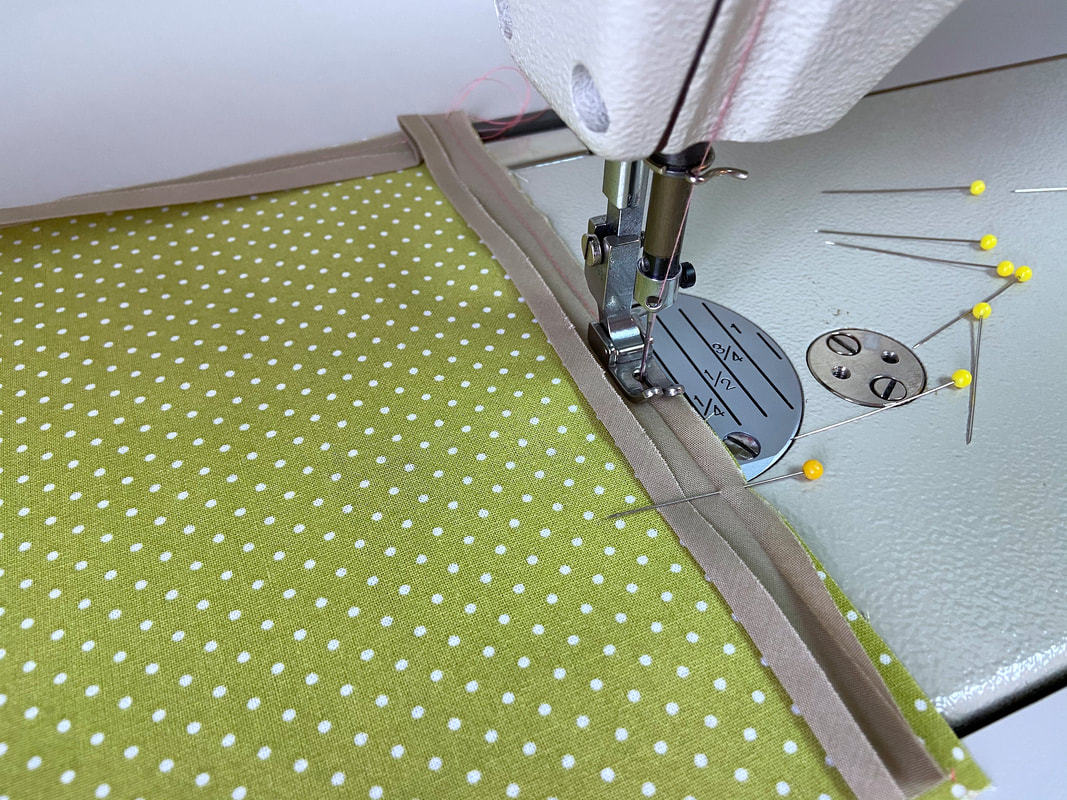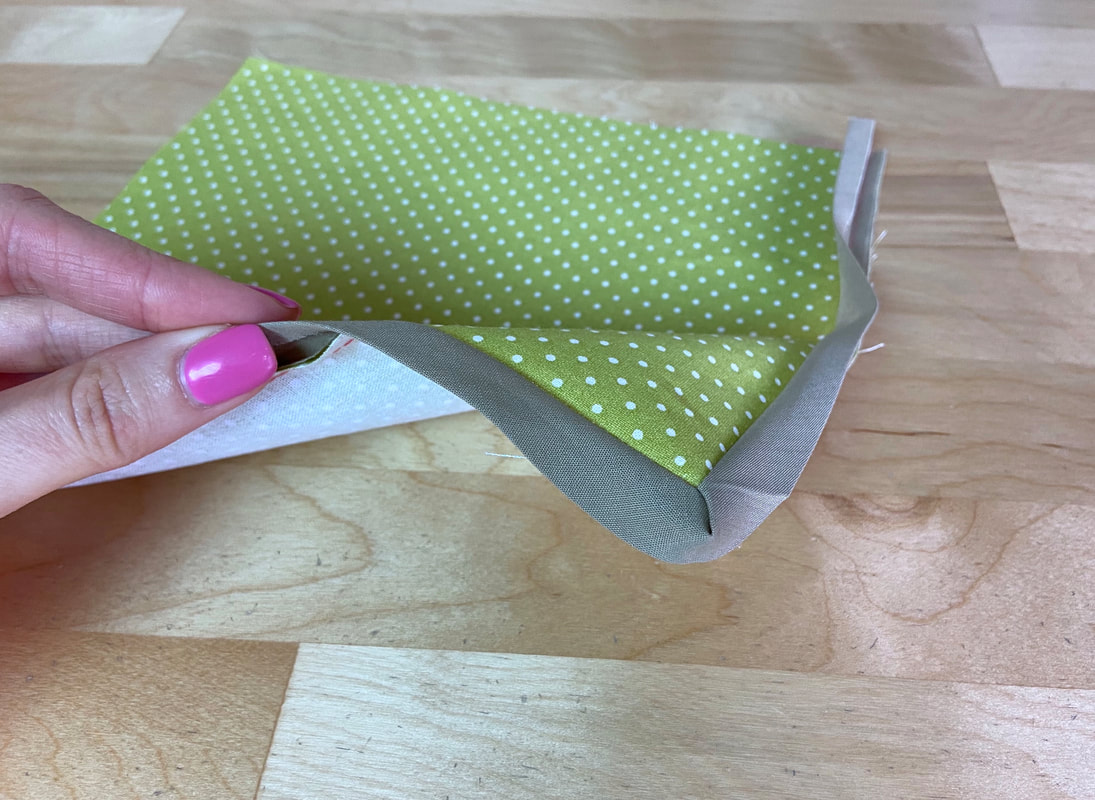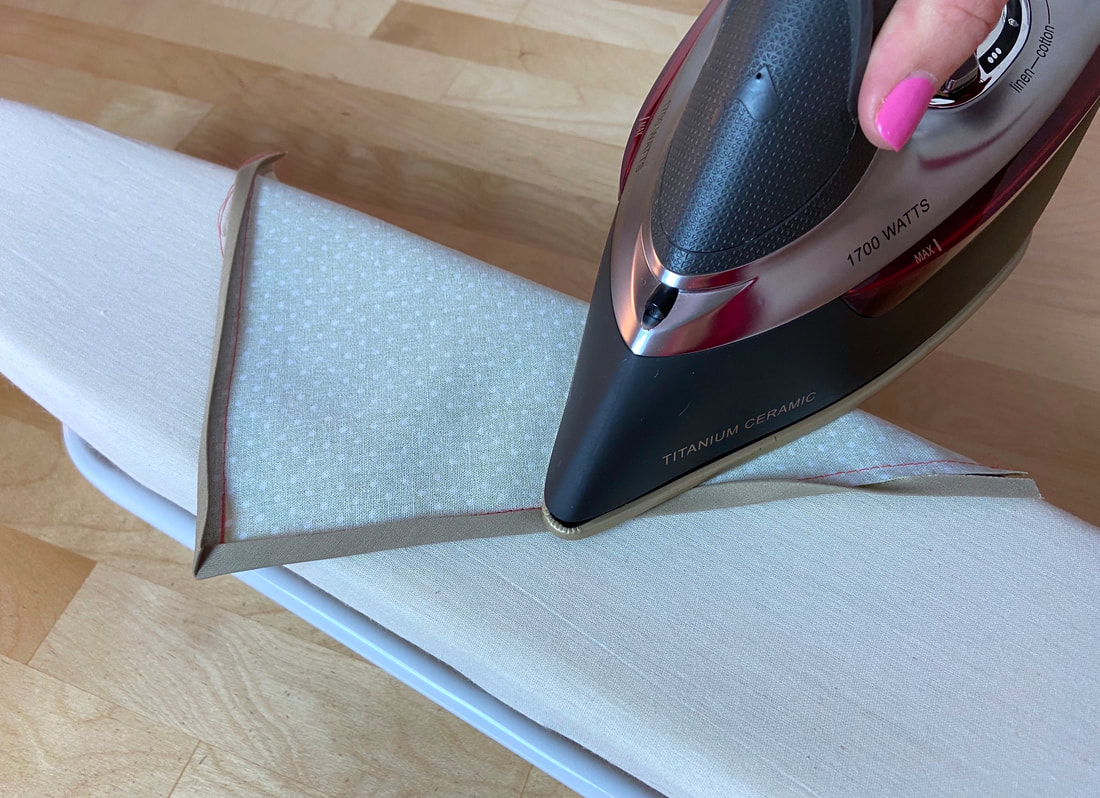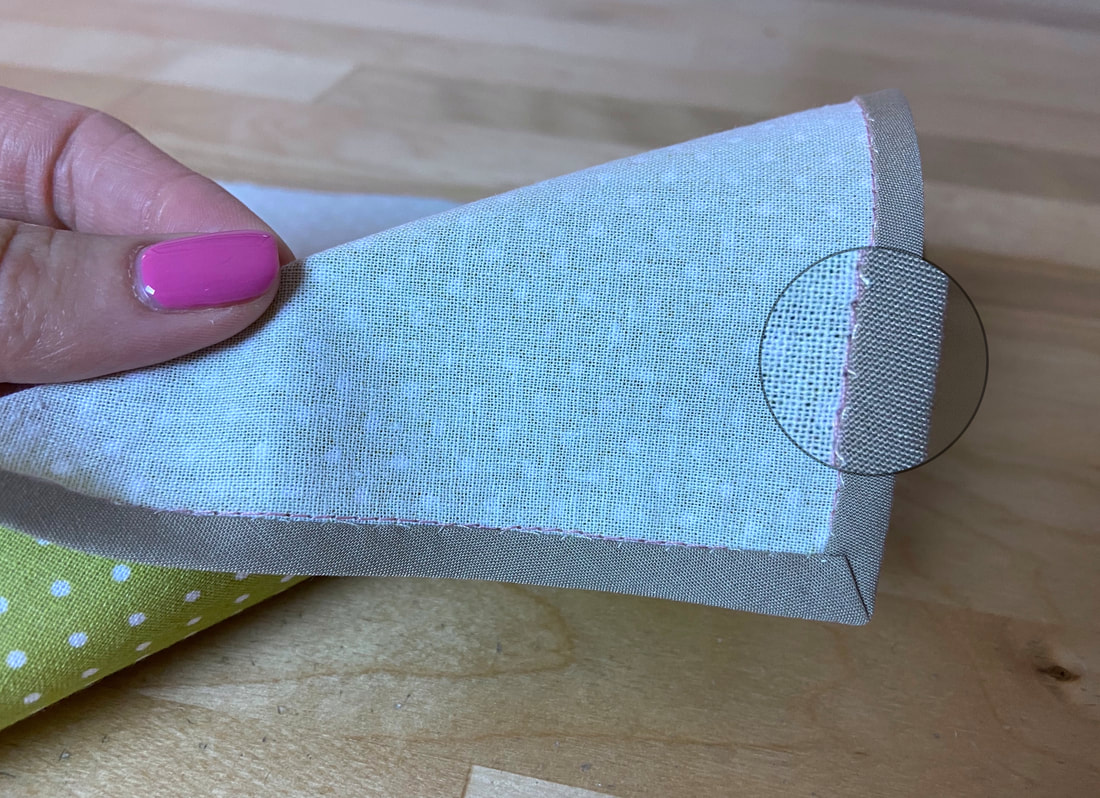In this example, a single fold binding is used. Follow the same technique if using a pre-packaged double fold binding.
Cut the bias fabric strip at 4 times the width of the finished binding application. In this case, the finished binding width will be ¼”, thus the initial bias strip is cut at a 1” width.
Use the steps in this tutorial to measure, cut and sew the bias strips together into a continuous piece (if needed): How To Sew Continuous Bias Binding
Due to the exposed nature of this binding application, the garment edges should not have any seam allowance. Since the binding serves as a means to enclose all cut edges, there is no need for folding the edges at a specific seam allowance.
1. Trim the seam allowance from both the vertical and horizontal garment edges.
2. Fold and iron the single layer binding at ¼” on both lengthwise edges. Fold towards the wrong side of the bias strip as shown.
3. Open one of the binding’s folded edge and align it to the garment’s vertical edge such that fabric face sides are touching and edges align. Insert pins horizontally to keep the layers in place.
4. Stitch the two edges at ¼” allowance, or following the binding’s crease line. Continue stitching until you arrive at ¼” from the bottom edge (at the corner) as shown. Backstitch to reinforce at this point.
5. At the corner, fold the bias binding such that the fold created by the excess aligns with the garment’s vertical edge. Doing so will naturally align the rest of the bias binding to the garment’s horizontal edge (hem). Iron the binding in this folded position.
6. Align and pin the rest of the binding to the garment’s bottom edge.
7. Starting at the corner, stitch the pinned horizontal edge at ¼” seam allowance.
8. Flip the bias binding towards the inside of the garment enclosing all raw edges underneath. The lengthwise center of the binding should correspond to the finished edges of the garment.
9. Iron the bias binding in this position.
10. Use a slipstitch (blind stitch) or a topstitch to seal the open edge of the binding to the inside of the garment as shown.
To learn how to slipstitch, follow the steps in this tutorial: Hand-Applied Blind Stitches
Learn more about topstitching in this tutorial: Sewing Topstitched Seams

